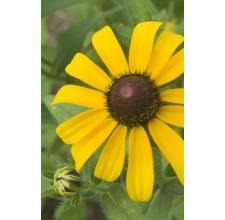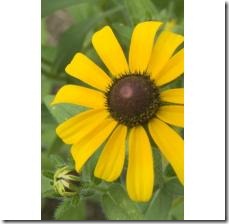Black-eyed Susan and other daisy-like perennials such as coneflower and Rudbeckia are easy-to-grow native perennials that attract hummingbirds, butterfly and beneficial insects with their sweet nectar. Once spent in early fall, how to handle their cleanup is a matter of personal preference.
Cut Down in Fall
-
You may choose to cut down stems in early fall once your Black-eyed Susans have finished blooming. This will leave your garden looking tidy and prevent propagation through seed spread (though not through rhizome spreading, the other main way Black-eyed Susans grow). Leave the foliage alone to finish dying off; cutting them too soon could stunt the growth of your plant in returning the next season.
Cut Down in Winter
-
Taking the dead plants out in winter means you’ve given the plant enough time to complete its life cycle for that year. Roots should still be set, and the plant will return as healthy as ever in late spring.
Cut Down in Spring
-
You could also choose to let the dead plant stay up through the fall and winter and remove it easily in your spring cleanup. One of the main benefits to this method is the increased traffic of small birds to your yard through the winter months. Sparrows, finches and other birds will perch on the seed heads and pick seeds out. Some gardeners consider the dark brown stem and seed heads to be part of their yearlong garden design because of the contrast with the snow and the interest that the birds bring. What bird lover can resist free bird seed? Spring cleanup is the easiest as the dried plant can quickly be removed but can lead to seed germination throughout the garden.


Deprecated: strpos(): Passing null to parameter #1 ($haystack) of type string is deprecated in /home/agriviek8Qv/agriviet.net/public_html/wp-includes/comment-template.php on line 2522